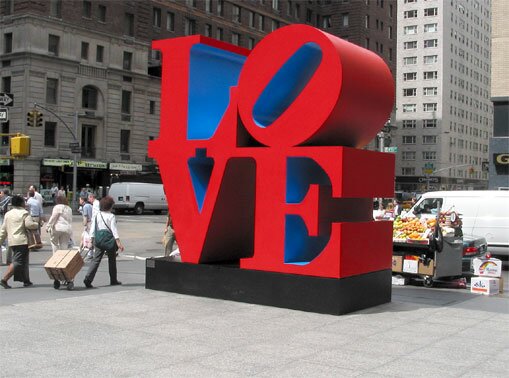Robert Indiana's "Love", Seventh Avenue


|
Rube's Notes: |
Excerpts from an NY Times article on Paul Kasmin gallery site:
|
All content Copyright 2003 on behalf of its creators; please obtain permission for anything besides private, noncommercial use.
This page requires a 6.0+ browser for the pictures/text to display correctly.
Figure Key:
M = Main figure; usually you can click on the image for a large version, suitable for wallpaper
1, 2, 3 (etc.) = Numbered figures, often referenced in text. When the text is blue it can be clicked on to swap the image.
Mc, C (etc.) = An view "in context" of the Main figure, or a general context view of the subject.
1b = A large version of the referenced figure.
1d = A detail or "macro" view of the referenced figure.
1i = A "digital reinterpretation" of the referenced figure. If more than one, different colors are used.